Hussam al-Mahmoud | Jana al-Issa | Muhammed Fansa | Lujain Mourad
Accuracy is lacking in the statistical figure in various sectors in Syria, and although the Syrian regime’s government issued two “estimated” statistics for the population of Syria during 2022, they do not provide correct figures, according to the director of the Central Bureau of Statistics, who acknowledged conducting the most recent official census of the population and dwellings in Syria 18 years ago.
The absence of accuracy is due to various reasons, most notably the lack of transparency, as Transparency International ranks Syria 178 out of 180 countries in its 2021 Corruption Perceptions Index.
It is not possible to know the exact rate of economic inflation, child labor, or the number of soldiers affiliated with the regime forces in the areas under its control, which is not much different in the areas outside its control as well.
The existence of de facto authorities that are “fighting for their survival” and the multiplicity of local actors and organizations have created conflicting statistical figures that cannot be relied on in many cases due to the absence of a clear work methodology that led to these results.
In a region such as Idlib, where the population density is increasing due to waves of displacement from other governorates, the exact number of the population cannot be known, while the UN Office for the Coordination of Humanitarian Affairs (OCHA) estimates the number of residents in northwestern Syria, under the control of the opposition, at 4.6 million people.
In this file, Enab Baladi discusses the statistical work reality in Syria in the last decade and the reasons for its absence in a bid to explore with experts and researchers the impact of its absence on planning, development, and research work, in addition to the role of local and international organizations in this regard.
Authorities take advantage
Statistical figure is absent
The World Bank Group asserts that available reliable statistics are considered basic components of the development strategy in its broadest sense, with the need to improve development data in quantity and quality, in all its aspects, in order to reach a world without poverty.
In the Syrian case, researcher Rasha Syroub criticized, in an interview with the local al-Watan newspaper last April, the statistical process mechanism in Syria, considering it “a problem without a solution due to its inadequacy or comprehensiveness, and the absence of participation and transparency.”
“This can be seen in the statements of officials; when a number is mentioned, it is often not identical,” she added.
Syroub believes that the low quality and unavailability of data means setting wrong and illogical policies and scenarios without providing the necessary statistical indicators for policy-making, decision-making, and evaluating government performance in the country.
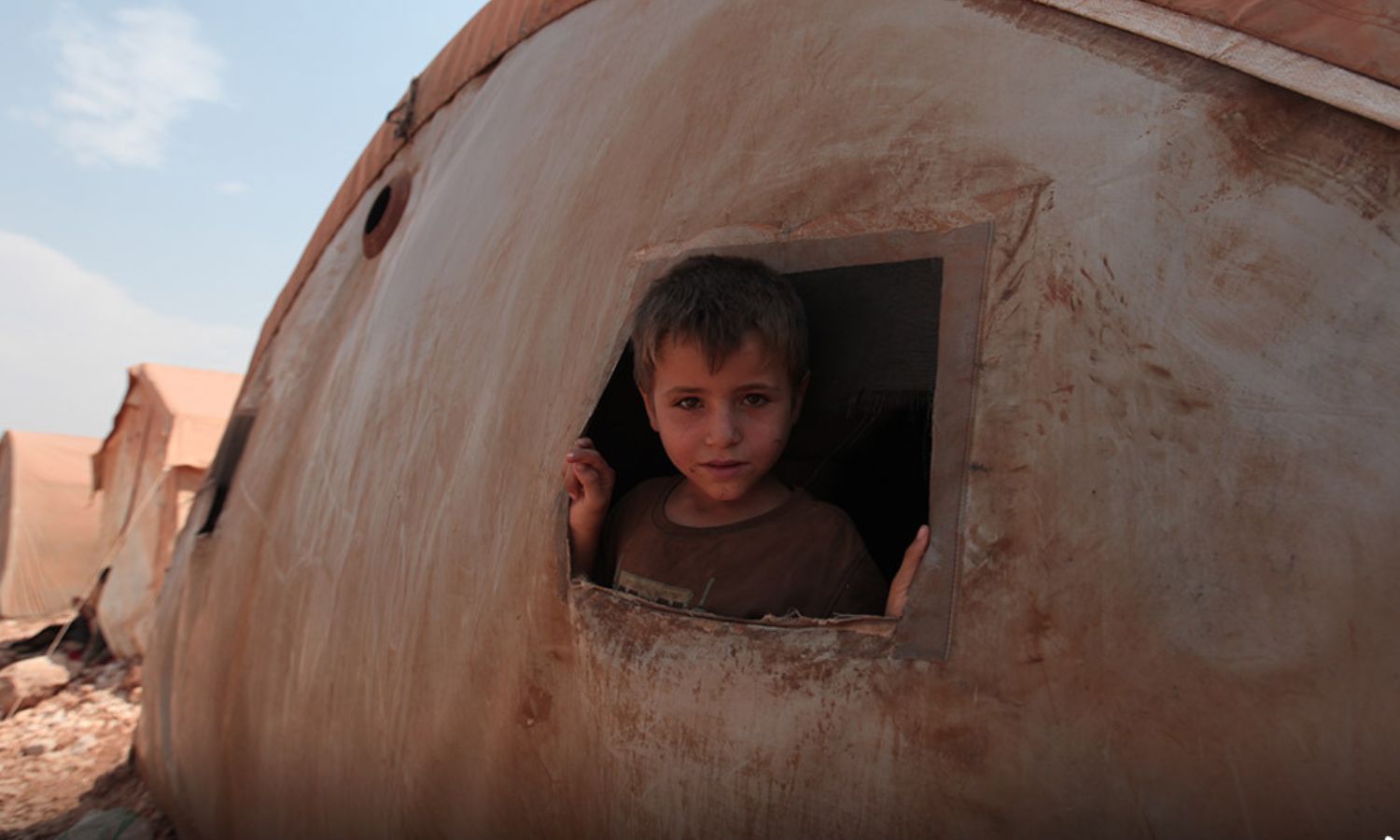
An IDP child poses from the window of his tent in the al-Tah camp in northern Idlib region (Noon Post)
Ubadah al-Abdullah, data analyst at the Jusoor Studies Center, told Enab Baladi that the census process in Syria is currently a highly sensitive political issue.
Jusoor’s researcher stressed that it is exploited to export numbers that are in the interest of the authorities, which means that these numbers cannot be adopted due to their lack of reliability.
Although there are some “approximate” statistical attempts at the level of entities and organizations, they do not replace the comprehensive national census.
For his part, Karam Shaar, director of the Syrian program at the Observatory of Political and Economic Networks, shed light on the importance of the independence of the statistical institution in order to obtain accurate numbers.
The main obstacle in the work of the Central Bureau of Statistics is its lack of independence, as it is directly funded by the government, which makes it affiliated with it, not an independent institution, and therefore this may push it under pressure from the government to issue statistics that are contrary to reality, such as those related to the inflation rate, for example, Shaar explained.
Despite the weakness of the resources of the Central Bureau of Statistics, it issues some accurate statistics in detail with regard to the number of arrivals to Syria, their methods of entry, and the hotels they visited.
In the opposition-held areas, the statistical reality is not better, as there are no useful figures on the work of public or private institutions, despite the passage of years of their existence.
The Autonomous Administration of North and East Syria (AANES), for example, deals with the issue of oil and its revenues as a “national security secret.” In addition, the annual budget it issues through an incomprehensible “article” reflects a state of manipulation of numbers, according to Shaar.
|
The main obstacle in the work of the Central Bureau of Statistics is its lack of independence, as it is directly funded by the government, which makes it affiliated with it, not an independent institution, and therefore this may push it under pressure from the government to issue statistics that are contrary to reality, such as those related to the inflation rate, for example. Karam Shaar, PhD in Economics |
The regime prefers “blackout”
Stats sharing raises collective awareness
“The service is currently unavailable.” This sentence is not strange for those who wish to visit the Central Bureau of Statistics website, the main portal for statistics related to Syrian reality on more than one level.
After repeated experiences that may lead to entering the site, researchers, interested persons, and journalists suffer from the method of presenting information and presenting it in a disjointed manner.
This means that reaching a conclusion and meaning from the desired numbers and ratios, if any, will require self-reassembly by the interested person, given that the statistics are mostly annual and are not published in a cumulative form that allows for quick comparison and access to information without painstaking research.
For example, the most recent statistical figure issued by this office was in 2019, with no alternatives to rely on.
And if the Syrian regime’s interest in providing statistics measuring the Syrian reality in numbers before 2011 was weak, it is necessarily weaker at the present time due to the need for cadres specialized in collecting and analyzing data within different institutional sectors, at the very least, in addition to the regime’s desire or lack thereof to provide unconditioned access to information and allow sharing with the people.
Sultan Jalabi, a social researcher, attributed the deterioration of the statistical reality in Syria to the regime’s desire to “obfuscate” information, regardless of its importance. For example, there are no accurate figures on oil production in Syria, its revenues, and its spending mechanism, in addition to a weakness in the regime’s ability to produce these statistics.
Jalabi, who is interested in issues of cultural and social change and economic development in Syria, said that the climate for sharing and exchanging information does not exist except in countries with civilized systems.
“This case reflects the desire of the authority itself to inform its citizens about information with its negatives and positives, which contradicts what Syria is going through and necessarily negatively affects research work that was originally based on numbers and data,” he added.
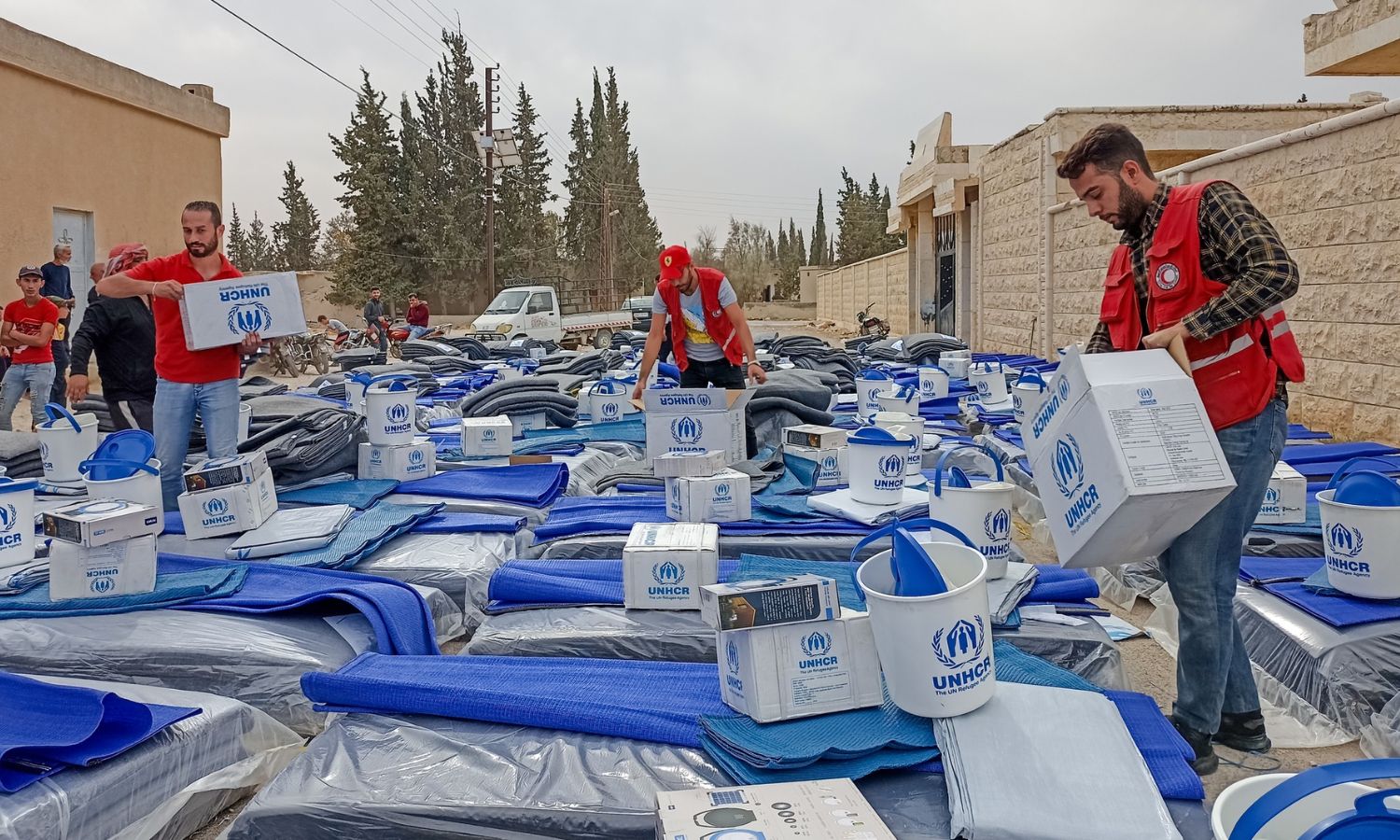
Distribution of winter aid rations in Hama countryside – 20 November 2022 (Syrian Arab Red Crescent)
|
A large part of the Syrian economy before the revolution was an unofficial or registered “shadow economy,” which means that it did not exist in the legal sense, and this compounds the difficulty of statistics with regard to national income and other accounts, meaning that the Central Bureau of Statistics resorts to estimates very often. Social researcher Sultan Jalabi |
Statistics are a definition of reality in order to understand it and determine mechanisms for dealing with it, but the lack of interest in transparency made the concerned institutions operate with the minimum required in dealings with international bodies such as the UN and the World Bank, according to Jalabi.
Statistical operations do not frequently require fieldwork because part of the office work can be accomplished by analyzing multiple available data and relying on them to reach conclusions. Statistics are held approximately every four years, and the annual updates that occur to it are to interrupt the original data with the variables that occurred during the year and to extract estimates.
On the stats situation outside the control of the regime, the social researcher indicated that the statistical operation is either absent or directed and does not constitute an urgent concern for the administrations of those regions, whether in northeastern or northwestern Syria.
With regard to the researchers’ ways of accessing information in Syria, Jalabi said, relying on his previous practical experience, that the process is very similar to assembling a fragmented image by obtaining part of the information from an institution and bringing another part from a second institution or department, with reference when using this information in any research indicates that it is the only one available on the one hand, and is suspicious on the other hand.
Jalabi also considered that the sharing of information is a measure of the extent of the democracy of the state and allows the citizen to understand the characteristics of the place and raise collective awareness, not to mention its developmental necessity.
“institutions follow different methodologies in formulating their reports and statistics so that they are not comparable to what might be issued by another institution,” according to Jalabi.
At the same time, authoritarian regimes may see the sharing of information and statistics as a gateway to creating “non-hybrid or controlled” censorship, which cannot be directed or direct its use of information, such as journalism and research work, as well as societal censorship.
Outside regime-held areas
Local ORGs work within the possible
Accurate statistical estimates and figures outside the control of the regime are not issued by local organizations or “governmental” agencies, and UN figures are still more reliable, which is reflected in more than one approach that may affect the design of early recovery initiatives and the reconstruction process, as well as their role in any future political solution.
According to a report by Enab Baladi, there were no clear figures for the number of pregnant women in Idlib and its environs.
For example, with 443,000 pregnant women visiting health facilities four times during the past six months, according to the Idlib Health Directorate, 253,000 women of whom made one visit to a medical center, an irrational indicator appears when measuring the number with global population growth rates.
Bassem Hatahet, an expert in the strategic management of civil society organizations, pointed out the reliance on the stats of OCHA, the UN body supervising aid, regardless of how close it is to reality, due to the lack of local statistical bodies concerned with this sector.
The provided data and stats are subjected to international legal framework, he added.
International and local agencies conduct estimated periodic statistics through surveys of their working teams on the ground, then the results are calculated through specific measurement equations.
Among the international bodies working to provide accredited periodic data are OCHA and the Humanitarian Needs Assessment Program (HNAP).
At the local level, the Assistance Coordination Unit (ACU) and the Syrian Response Coordination Group (SRCG) provide periodic studies and surveys that focus on the needs of the camps and the education and health sectors.
The ACU also has a platform that displays the number and movement of the population in northwestern and eastern Syria.
The Population and Housing Census Administration Manual, issued by the United Nations in 2002, explained the structure and method of the census based on traditional survey methods and electronic storage, which require material and human resources at the country level.
In 2018, the UN issued a newer population and housing census methodology, which relies on the use of administrative records in the census.
However, following this methodology requires the availability of several conditions that the different areas of control in Syria do not possess, such as the quality and availability of records and descriptive data, personal identity determinants, and administrative variables.
The mechanism used for population estimation is similar between international and local teams, with different material and human capabilities and coverage areas.
According to a study conducted by the Syrian Dialogue center last February, the UN-accredited HNAP team relies on the data provided by 465 data collectors covering about 9,961 population centers across Syria since 2016.
The methodology of the team’s work outside the regime’s control focuses on collecting data in each population group through the intersection and matching of 90% of information obtained from three different sources, such as local councils, some community leaders, camp managers, and humanitarian workers.
It also relies on information on the movement of internal and external crossings as secondary sources, and a survey of displacement movements, by comparing data from areas of exit to areas of destination.
And when a large gap in the numbers is noticed, a new team is directed to the region to re-evaluate and adopt the numbers resulting from this survey, as these gaps occur between two and three times annually.
According to Maher al-Hudaib, the reporter in charge of reports and the network of researchers in the Assistance Coordination Unit, the organization relies on a group of field researchers on the ground, each of whom is responsible for covering one or two areas. Camp researchers also cover a group of camps in northwestern Syria.
The organization’s methodology is based on interviewing three sources of information everywhere, such as local councils, medical centers, vaccine campaign officials, agencies that implemented a humanitarian response within the camp, and others, to cross-reference data at the central level with data from UN agencies.
The ACU has 100 field researchers specialized in collecting population data, covering on a monthly basis 2,330 cities and towns and about 600 camps in northwestern and eastern Syria, according to what al-Hudaib told Enab Baladi.
Number chaos
And because the statistics are estimated, the work of the organizations is not without a margin of error that necessarily affects the humanitarian response and deprives a large segment of aid because of miscalculations.
By comparing the data of international and local organizations on the population in northwestern and northern Syria (Turkish-held Tal Abyad and Ras al-Ain), the margin of difference reaches about one million people, which is a large number given the limited geographical area, and may reach 20% of the natural population.
OCHA’s stats update in northwestern Syria about a month ago show that the population is 4.6 million people, but according to the HNAP program, the number is 4.5 million people according to the population census report in Syria in May 2021.
While the population of the same region reached 4.76 million people, according to the report of the assessment of humanitarian needs in Syria by the OCHA office last February.
As for local organizations, the ACU estimates the population in the same region to be 5.39 million, with a gap of about 700,000 people compared to UN figures.
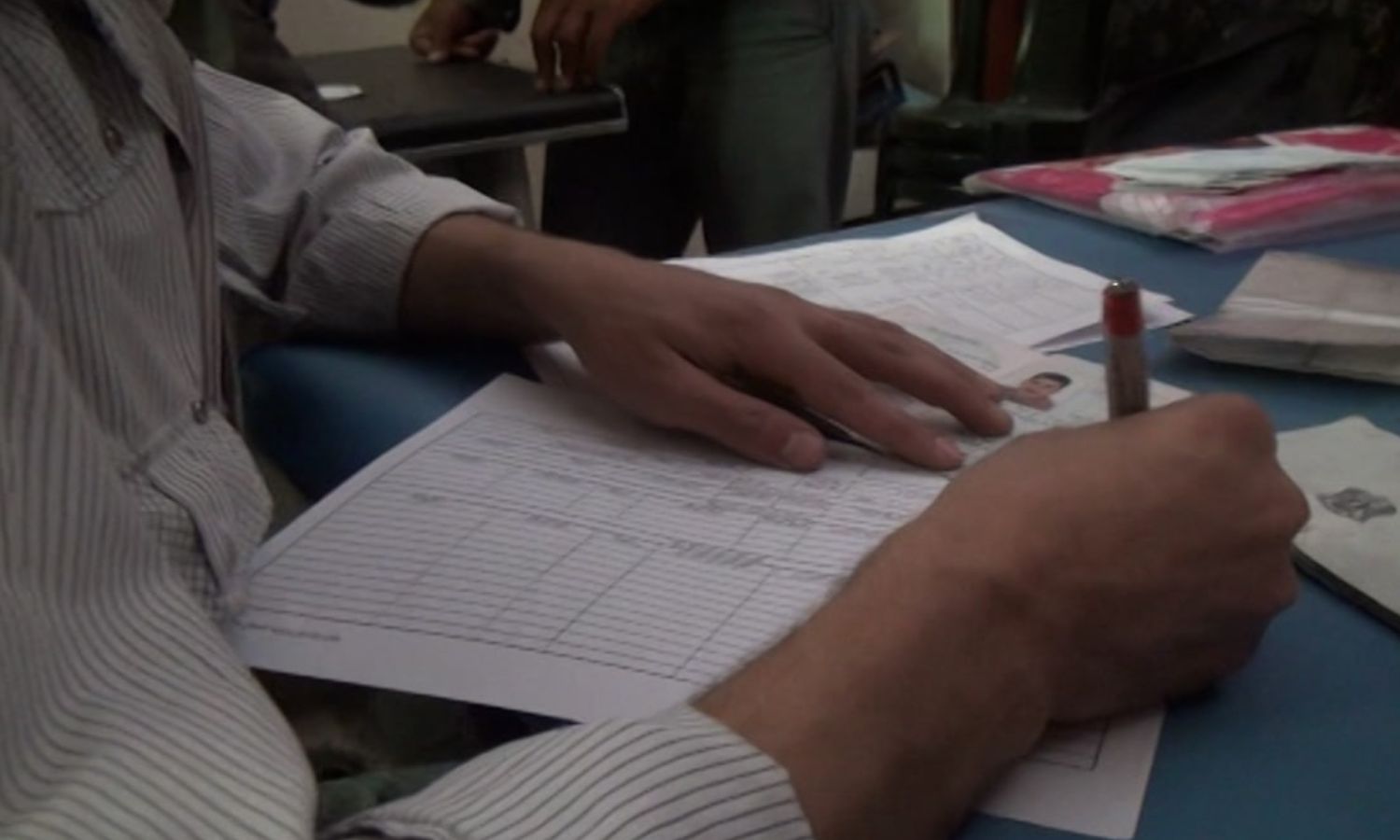
A local council in Eastern Ghouta suburbs near Damascus conducts a domestic census- 10 June 2015 (Enab Baladi)
Survey challenges, difficulties
Researchers began their work in the ACU in the camps of northwestern Syria in 2013 by counting the number of displaced people in each tent, as each researcher is allocated a group of tents to issue an accurate census on a monthly basis.
According to al-Hudaib, the increasing waves of displacement and the “very large” increase in the number of camp residents made it difficult to apply the census accurately and personally, and it has become an “impossible” issue that requires a large number of researchers and huge financial costs.
Statistics teams suffer from an acute shortage of field researchers to cover cities, towns, and camps that are separated by long distances, with the difficulty of obtaining approval to collect data from some of the controlling local authorities.
The presence of towns that are not registered in the residential urban plan (by the Syrian regime) has led to a difference in statistics between the different entities, as local organizations such as the ACU resort to including these towns to the nearest registered town.
The UN compares population data with the regime’s Central Bureau of Statistics in order to reach compatibility with the Syrian regime’s data, which explains the small number of UN data compared to the data of other humanitarian agencies operating outside the regime areas.
What’s the alternative?
Improvised plans and waste of resources
The research, activities of organizations, and development plans of governments are based primarily on statistics issued by institutions affiliated with the government itself.
Syrian research centers also need figures to read the reality of the Syrians and to develop plans and recommendations for local and international actors in order to improve this reality.
The researcher in the field of local administration and political economy in Syria at the Omran Center for Strategic Studies, Ayman al-Desouki, pointed out the importance of statistics in analyzing the phenomenon that the researcher is studying and enabling him to predict its paths, which makes him more realistic in proposing policies and recommendations directed to decision-makers.
Al-Dusouki told Enab Baladi that the absence of accurate official statistics leads to “improvised plans and a waste of resources,” indicating that the current governments and de facto authorities share the weakness of their institutional structures and their material and human resources, in addition to their limited geographical reach, and the absence of official channels of communication between them, which impedes the collection of integrated, comprehensive and objective statistics, and limits their ability to develop constructive development plans.
|
The four spheres of areas are unable to be self-sufficient and do not have sufficient resources to build a development plan. Looking at an area of influence, with its statistics and resources, separately from the rest of the regions makes any developmental intervention of limited impact. Researcher at the Omran Center, Ayman al-Desouki |
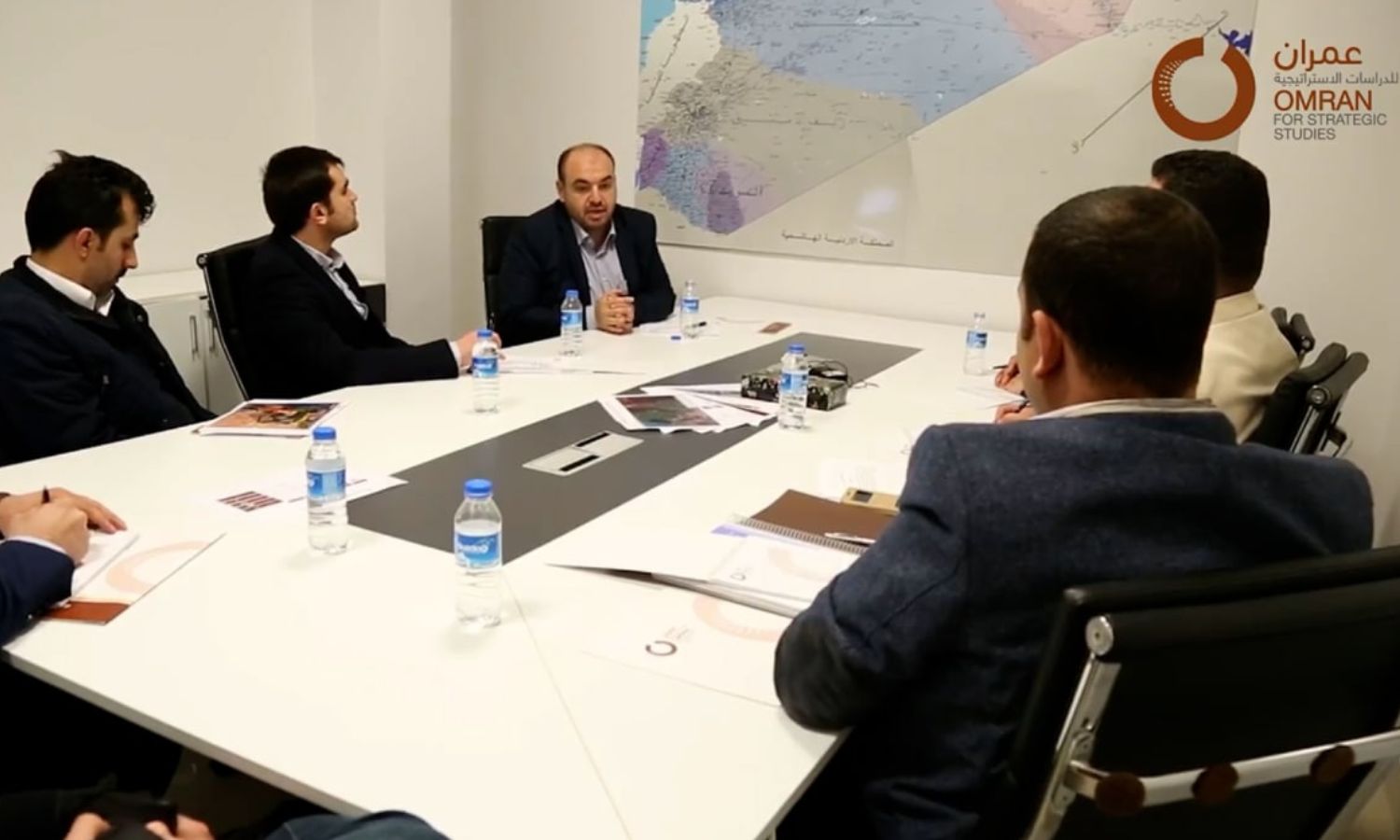
A group of researchers at the Omran Center for Strategic Studies – 26 April 2017 (Omran Center for Studies/official website)
Foundation stone
The Executive Director of The Day After organization, Mutasem Syoufi, believes that statistics are the basis for any work related to humanitarian response, economic development, politics, or reform and political transition.
Syoufi explained to Enab Baladi that the success of drawing up plans in these areas requires statistics on the population, its age, and the ratio of men to women, as well as sectarian, ethnic, and religious diversity and levels of education, in order to know the reality of society. Organizations also tend to rely on the estimates of credible institutions.
Actors need reliable information to implement policies and programs, develop new policies in various sectors, and monitor their impact, according to a report issued by the European Center for Statistics (Eurostat).
The Day After organization relies on an opinion poll program to shed light on Syrians’ priorities, needs, and experiences, through the use of representative samples capable of providing an approximate picture of reality, which contributes to understanding general trends, whether political options or humanitarian needs, without dispensing with statistics.
The problem of providing objective and accurate statistics regarding economic, social, or security-military files is old for those working in Syrian affairs, which forces them to look for alternatives, according to Ayman al-Desouki, a researcher at the Omran Center.
According to the researcher, the research bodies resort to building a database from multiple sources and with several tools such as interviews, databases of non-governmental and international organizations, and cross-referencing and processing them according to a scientific methodology in order to reach as much as possible statistics that can be built upon, which requires double effort and time.
| Representative sample: A subgroup or a small part of the community that can be chosen randomly or studied by specialists to represent the largest segment of the community or the target group in order to reduce the waste of time and money in the absence of accurate statistics. |
Alternatives restricted by local authorities
While working on a report by The Day After organization using opinion polls in areas outside the regime’s control, the organization’s work was met with many accusations, and this is part of the obstacles facing statistical work by questioning the motives of statistics in addition to the absence of the bodies responsible for making databases.
Researcher Ayman al-Desouki also pointed out the need to deal with extreme caution with people who can be relied upon to secure official or unofficial data because they are exposed to possible risks of arrest on multiple charges, which happened in various areas of influence.
Obtaining statistics for northwestern Syria is more flexible compared to other regions, which provides research centers and organizations with opportunities for greater activity in the region, which translates on the ground into an increase in the number of reports issued and the volume of information from the region, according to al-Desoukii.
What is the future of statistics in Syria?
The director of the Syrian program at the Observatory of Political and Economic Networks and the doctor in economics, Karam Shaar, told Enab Baladi that private institutions can fill the void in the statistics file in Syria in different areas of control, but the work here is related to resources that are not available in private sector institutions or research institutions.
Shaar believes that providing resources for independent research institutions, or creating statistical institutions that are financially subordinate to the de facto powers and governments and that are administratively independent and not subject to pressure, can bridge the gap.
The researcher at the Jusoors for Studies Center, who is interested in analyzing data, Ubadah al-Abdullah, agreed with Dr. Karam Shaar, stressing that the solutions may lie in strengthening the role of independent organizations, according to the conditions that Shaar also mentioned.
Sultan Jalabi, a social researcher interested in issues of cultural and social change and development, called for the economic sector in Syria to strengthen and support the role of civil society organizations in this context, as a start on the one hand, and to serve as a practical example for other parties in this field.
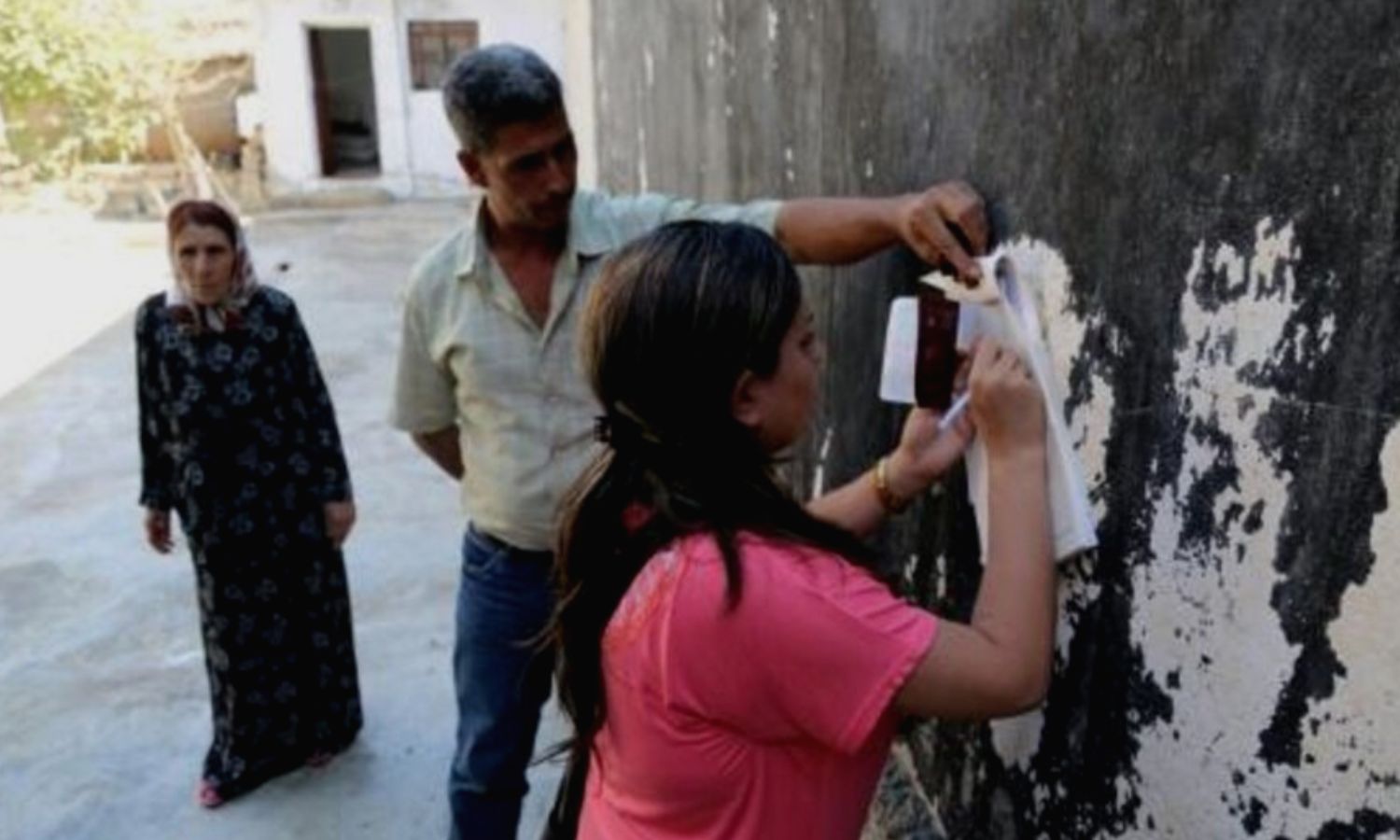
The Autonomous Administration conducts population statistics in northeastern Syria – 19 September 2016 (AFP)
if you think the article contain wrong information or you have additional details Send Correction
النسخة العربية من المقال
-
Follow us :












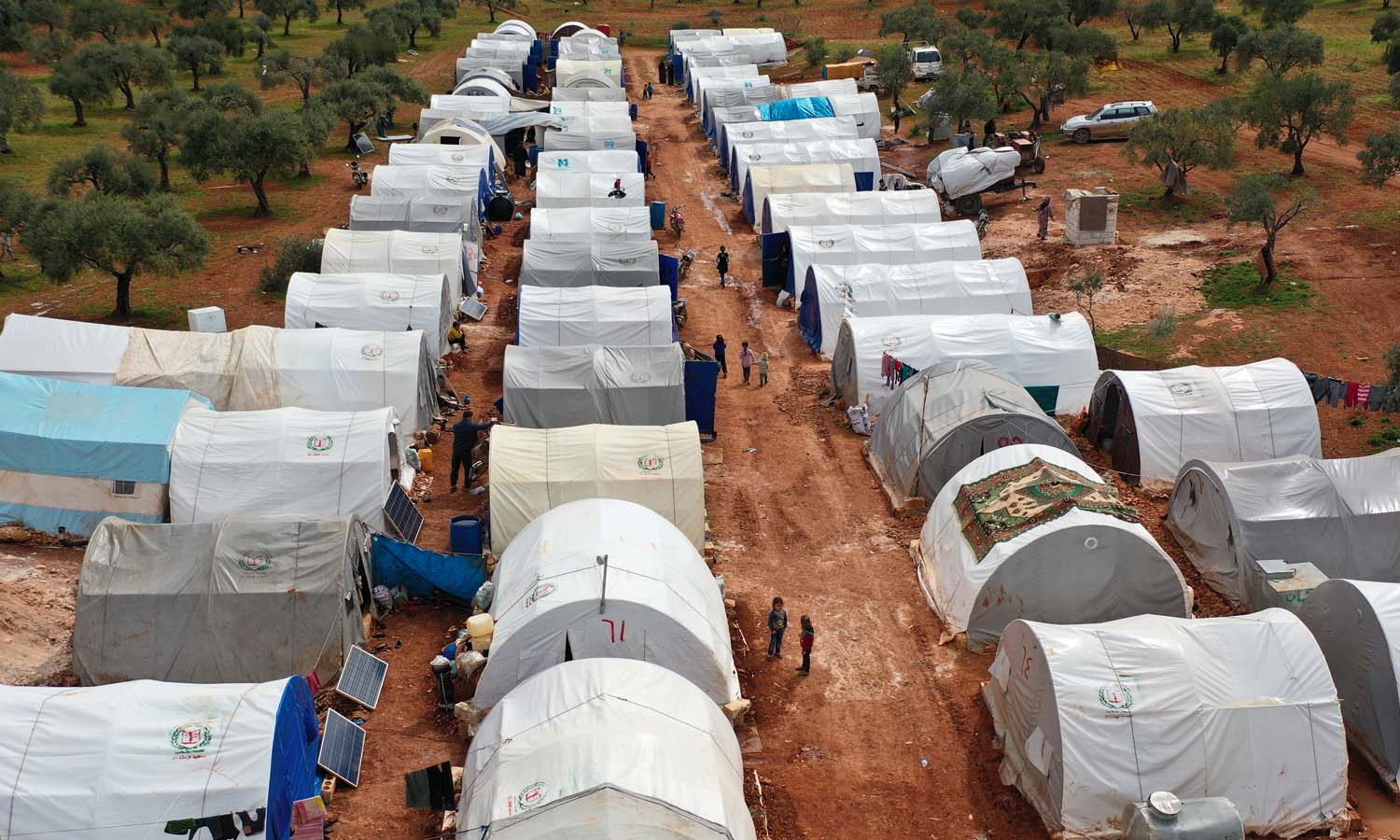
 Torn tents in an IDP camp due to an air storm in northwestern Syria (AFB)
Torn tents in an IDP camp due to an air storm in northwestern Syria (AFB)





 A
A
A
A
A
A
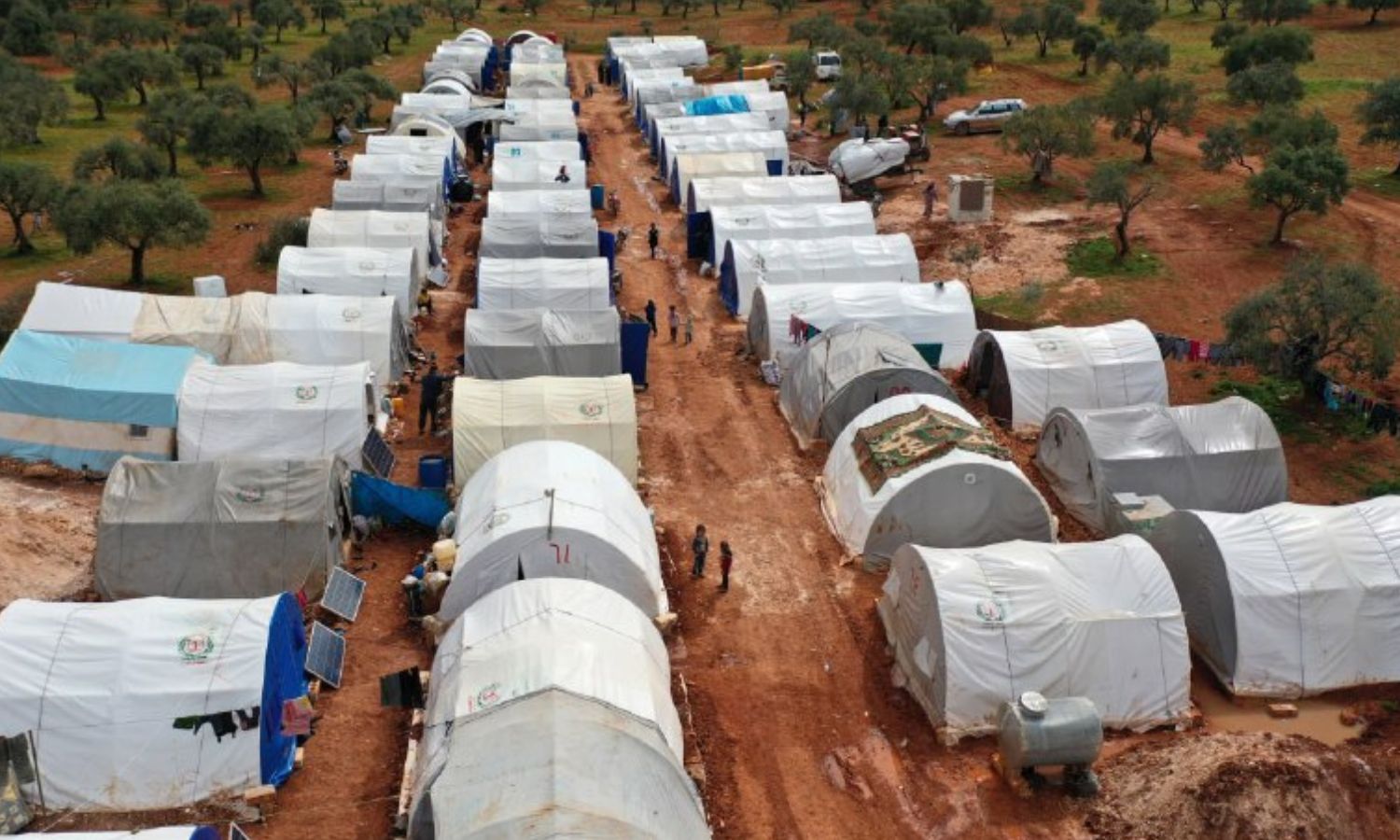
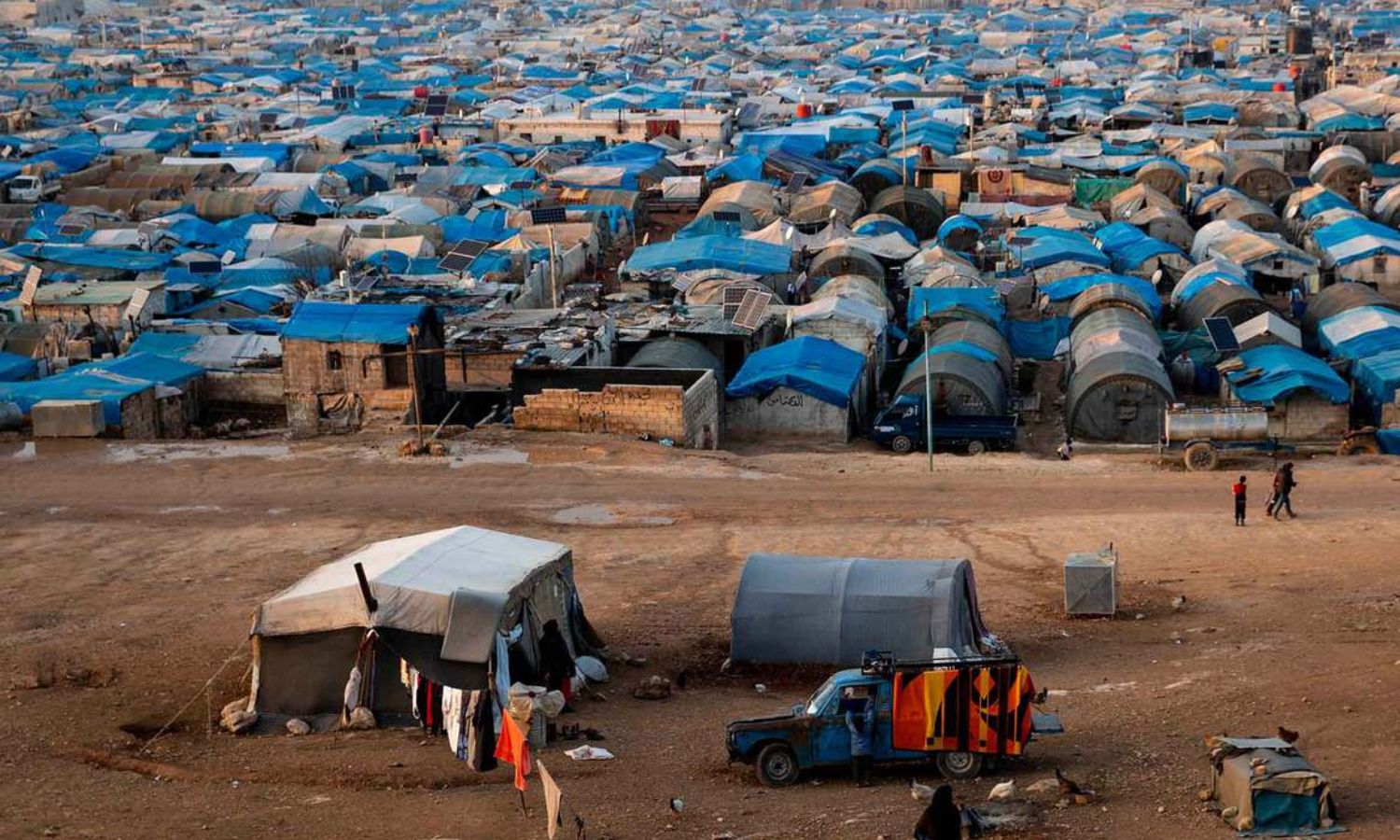






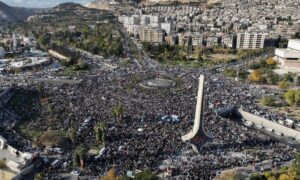
 More In-Depth
More In-Depth